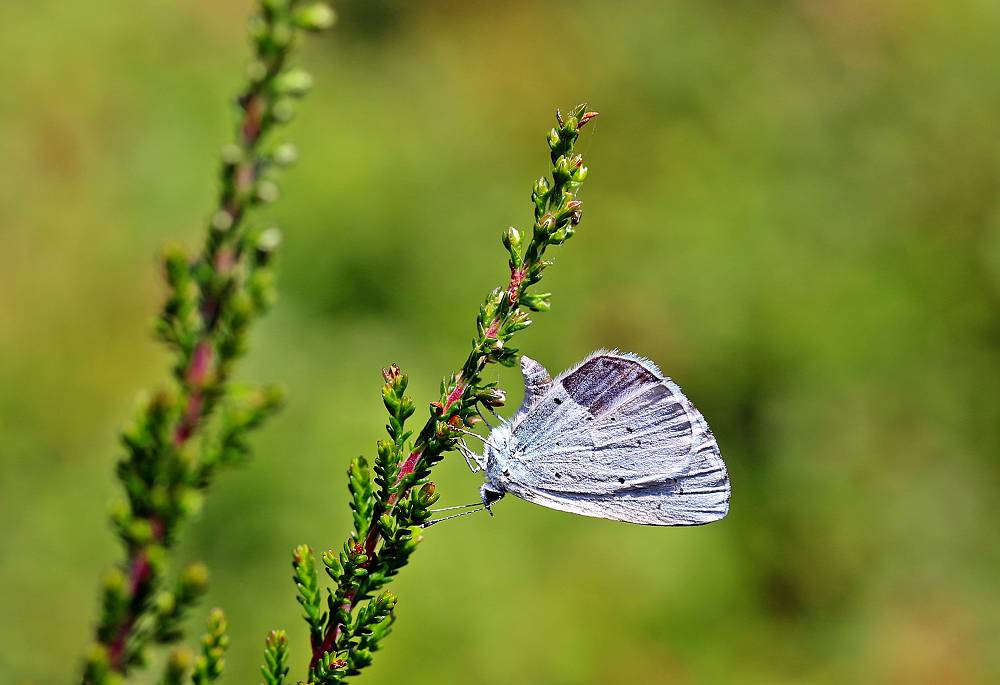Essential host plants for butterflies in your garden

The butterfly population in the Netherlands shows a strange picture. Some species are doing very well, others are not doing well at all. That is why it is very important to give butterflies a helping hand in the garden – and host plants play an important role in this.
Read more below the advertisement

There are organisms that need certain plants to grow or reproduce. These host plants are also called host plants. They serve as hosts for organisms such as insects, but also various fungi and bacteria or even other plants.
Butterflies are known for their use of host plants. After all, they have to lay their eggs somewhere. They naturally prefer a plant that the caterpillar can eat as soon as it hatches. That is why some butterflies are very picky and the disappearance of their host plants can threaten their survival.
Give the following butterflies in your garden a helping hand by planting their host plants in your garden:

Especially after a warm spring you will see more queen pages, especially in the southeast of the Netherlands. In your garden they like to lay their eggs on the upper side of the leaves of carrots in particular, but also other umbellifers such as fennel, dill and parsnip. So starting a vegetable garden is not a bad idea …
Host plants for the Queen of Spain: umbellifers such as carrot, fennel and dill. Food source for the adult butterfly: nectar-rich flowers .

The Painted Lady, originating from Central Africa, often comes in large numbers at the same time. The flight period is from May to October. It mainly hibernates in Southern Europe. As long as there are some thistles in full sun somewhere, the Painted Lady will lay its eggs.
Host plants Painted Lady: thistles (especially thistles such as field thistle), common nettle, borage. Food source adult butterfly: nectar-rich flowers .

After an absence of thirty years, the imperial cloak returned to the Netherlands in 2015 as a resident butterfly. It likes a wooded environment. The imperial cloak lays its eggs on the bark of trees that grow near wood violets. This forest plant is also an excellent ground cover that provides a blue-purple carpet of flowers in the spring.



One of the most well-known and recognizable butterflies in the garden, the peacock butterfly. You can sometimes encounter them in the winter when the weather is 'warm' and sunny, but they really come out around March. The eggs that these butterflies lay, provide a new generation of butterflies in the summer. Make sure you have a nettle in a rough corner, there is a big chance that you will find caterpillars on it (and at least 40 other (night) butterflies use this plant).
Host plants for the peacock butterfly: Common nettle, hop and prickly pear. Food source for the adult butterfly: Blackthorn, coltsfoot, dandelion, meadowsweet , field thistle and butterfly bush .

The Holly Blue lays its eggs on the upper branches of various host plants that prefer a sunny spot. In the spring, holly is a popular host plant, in the summer it includes ivy, heather ( Calluna vulgaris ) and purple loosestrife. Incidentally, the caterpillar of the Holly Blue is regularly visited by ... ants! The caterpillar secretes a sweet substance and the ants lick it up. In return, they protect it from attackers, such as parasitic wasps .
Host plants for the Holly Blue: ivy, holly , purple loosestrife, heather, butterfly bush . Food source for the adult butterfly: honeydew, sap.
Tip!

The caterpillars are a bit tricky to spot, as they look a lot like bird droppings. One of the most important host plants is the hop. This native climber looks great, but it can grow incredibly fast: up to eight metres in one season! But if you have the space for it: the torn aurelia is happy with it.
Host plants for the Comma butterfly: hops, nettles. Food source for the adult butterfly: butterfly bush ( Buddleja ), meadowsweet ( Eupatorium cannabinum ).

The caterpillar of the orange sand eye hibernates in tufts of grass. They dig themselves deep and in the spring they continue eating happily. That is why it is important not to tidy up your garden too neatly before the winter. Just leave withered blades of grass in the winter. That also protects the plant against the winter cold.
Host plants for the Orange Sand-eye butterfly: grasses such as red fescue ( Festuca rubra ) or common bent grass ( Agrostis capillaris ). Food source for the adult butterfly: wild marjoram (oregano) .
gardenersworldmagazine





